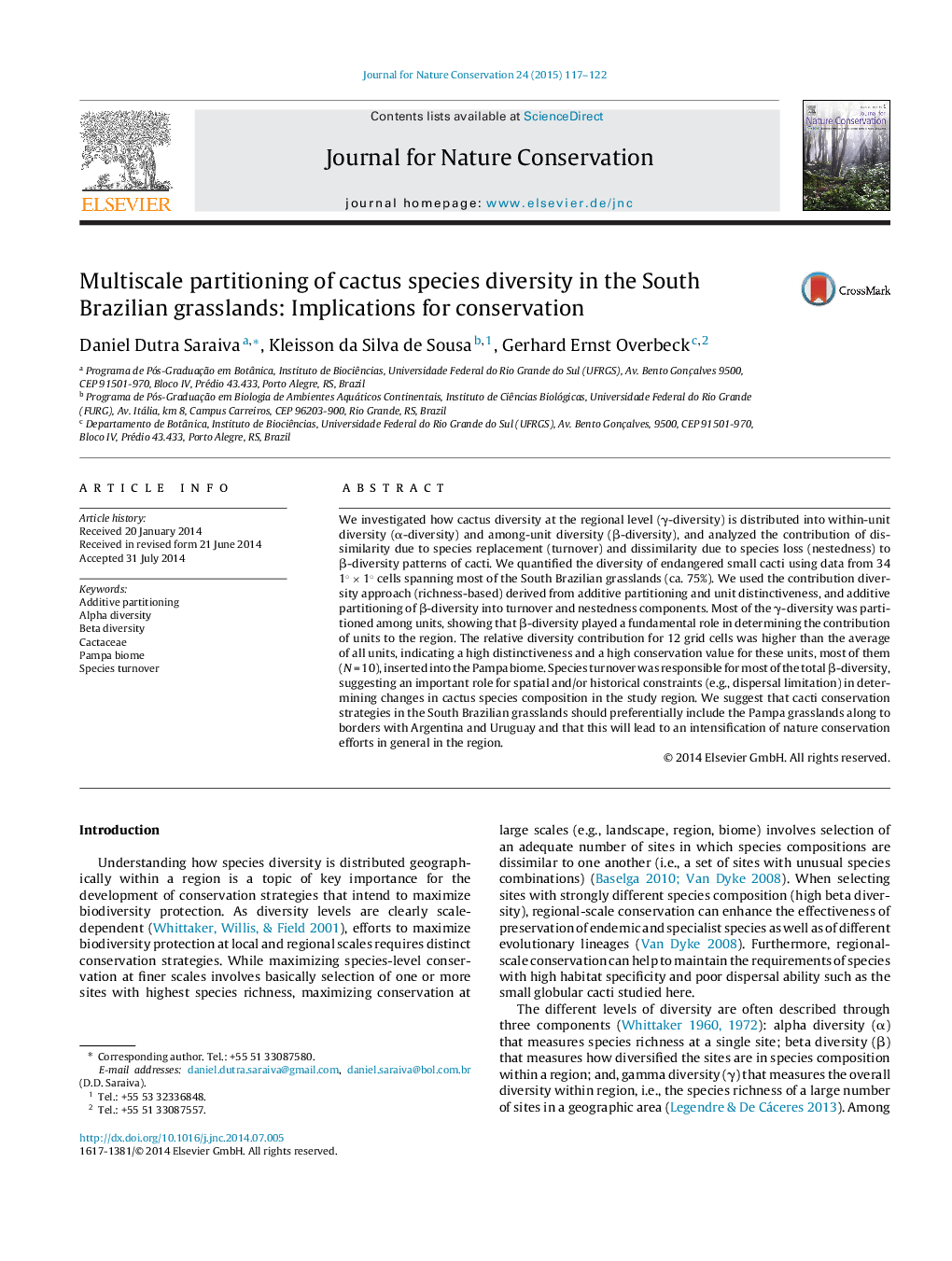| Article ID | Journal | Published Year | Pages | File Type |
|---|---|---|---|---|
| 4399857 | Journal for Nature Conservation | 2015 | 6 Pages |
Abstract
We investigated how cactus diversity at the regional level (γ-diversity) is distributed into within-unit diversity (α-diversity) and among-unit diversity (β-diversity), and analyzed the contribution of dissimilarity due to species replacement (turnover) and dissimilarity due to species loss (nestedness) to β-diversity patterns of cacti. We quantified the diversity of endangered small cacti using data from 34 1° Ã 1° cells spanning most of the South Brazilian grasslands (ca. 75%). We used the contribution diversity approach (richness-based) derived from additive partitioning and unit distinctiveness, and additive partitioning of β-diversity into turnover and nestedness components. Most of the γ-diversity was partitioned among units, showing that β-diversity played a fundamental role in determining the contribution of units to the region. The relative diversity contribution for 12 grid cells was higher than the average of all units, indicating a high distinctiveness and a high conservation value for these units, most of them (N = 10), inserted into the Pampa biome. Species turnover was responsible for most of the total β-diversity, suggesting an important role for spatial and/or historical constraints (e.g., dispersal limitation) in determining changes in cactus species composition in the study region. We suggest that cacti conservation strategies in the South Brazilian grasslands should preferentially include the Pampa grasslands along to borders with Argentina and Uruguay and that this will lead to an intensification of nature conservation efforts in general in the region.
Related Topics
Physical Sciences and Engineering
Earth and Planetary Sciences
Earth and Planetary Sciences (General)
Authors
Daniel Dutra Saraiva, Kleisson da Silva de Sousa, Gerhard Ernst Overbeck,
